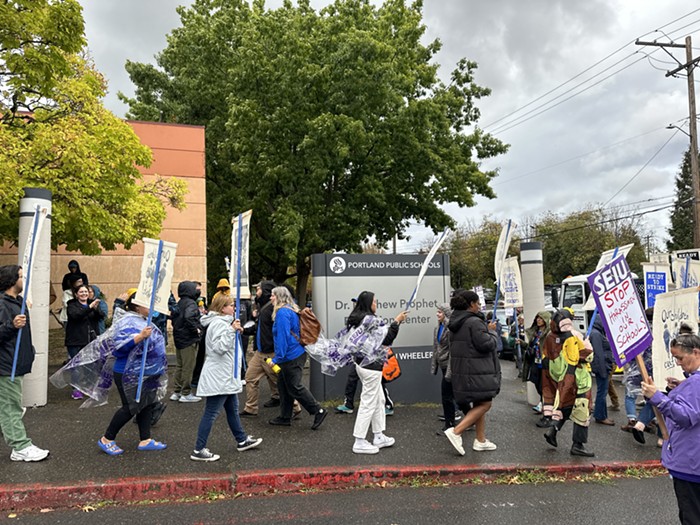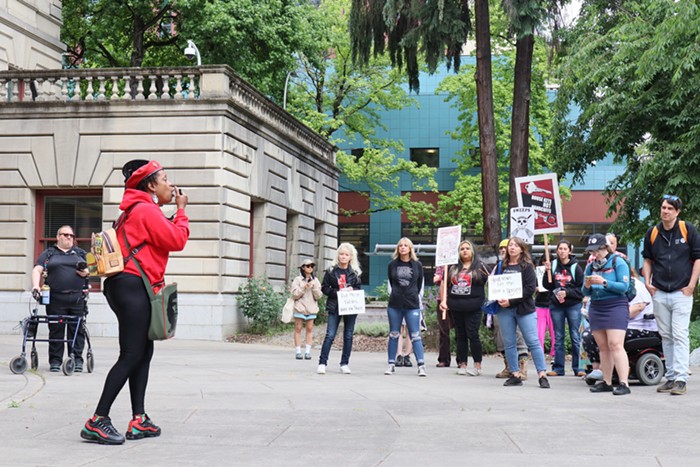There have been some interesting developments on the Taser front since I wrote my feature on the weapons last month.

On November 26, Judge Paul Papak issued an opinion on the Fouad Kaady case—Kaady was a 27-year-old Gresham man who died at the hands of Police in Gresham Sandy shortly before this reporter got to Portland, in September 2005. Kaady had been in an auto accident, but when police arrived on the scene, instead of treating Kaady for medical concerns, they began treating him like a criminal, ordering him to lie down on the pavement. When officers were unable to force Kaady to lie on the ground, they shot him with a Taser gun, which apparently only caused him to act more wildly. Moments later, he climbed to the top of a squad car. In response, at least one of the officers fired at him. Kaady died at the scene. You can read Scott Moore's account of the death here. Judge Papak's order makes several distinctions between using a Taser for compliance and using it when a victim poses a threat, citing numerous pertinent cases:
Defendants argue that pain compliance techniques do not constitute excessive force. The cases supporting that contention, however, involve volatile crowd situa-tions or aggressive suspects, not an encounter with a sin-gle individual sitting in the street. See Gregory v. County of Maui, 523 F.3d 1103, 1106-07 (9th Cir. 2008) (suspect brandished a pen at officers, refused to put it down and resisted officer's efforts to grab his arm and move it so the pen was facing away); Tatum v. City & County of San Francisco, 441 F.3d 1090, 1096 (9th Cir. 2006) (of-ficer used bar arm control hold to place handcuffs on an agitated suspect and to force the suspect to the ground when he resisted the officer's efforts to handcuff him); Forrester v. City of San Diego, 25 F.3d 804, 807 (9th Cir. 1994) (officers used gradually increased pressure on protestors' arms and wrists to force them to stand up and walk when more than 100 protestors [*58] engaged in concerted effort to invade private property and obstruct access to a medical facility); Eberle v. City of Anaheim, 901 F.2d 814, 820 (9th Cir. 1990) (officer applied a fin-ger-hold to control suspect while his friends scuffled with other officers and a crowd of sixty-to-seventy had gathered to watch). I find these cases unpersuasive to support defendants' contention that their actions here were reasonable.
You can download the full opinion here as a pdf.
Depositions also recently took place in Michelle Schreiner's December 2007 lawsuit against Gresham police. Schreiner, a diabetic, was Tasered by the cops in Gresham after they were called out to assist her in the middle of a diabetic seizure. She had a needle in her hand full of insulin, and when the cops couldn't get her to drop it, they allegedly Tasered her. You can download a copy of that lawsuit as a pdf here, if you're interested in reading more. "The outrageous thing in this case is that this was a call for medical assistance and to help, the police whip out a taser and electrocute her with 50,000 volts. This is just not very helpful," says Schreiner's attorney, Beth Creighton.
There's also been another two lawsuits filed this week against the Portland Police Bureau for excessive force related to Taser use. The first, filed by Hung Minh Tran, relates to an incident covered by the Mercury earlier this year, when a cop allegedly Tasered Tran twice, then lied on the stand about the details in court. Tran is seeking over $1 million in damages. You can download a copy of the lawsuit here. The second, filed by Christophe Clay against Police Officer John Hughes and the city of Portland, alleges Clay was Tasered twice while he was on his knees with his hands behind his head. Download a copy of that lawsuit here.
Until Portland's police decide to make like San Francisco's and do without Tasers, you stay safe out there.


















